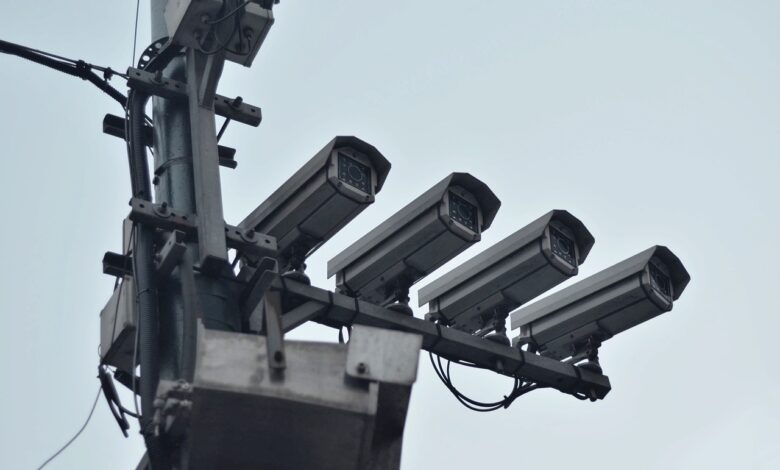
Exploring the World of Networking Cameras:
In the digital age, the need for advanced surveillance and monitoring solutions has grown exponentially. Networking cameras, commonly known as IP cameras, have become a cornerstone of modern security systems. These devices offer a range of features that make them indispensable for both personal and professional use. This article delves into the intricacies of networking cameras, exploring their technology, applications, and benefits.
What is a Networking Camera?

A networking camera, or IP camera, is a digital video camera that transmits data over a network. Unlike traditional analog cameras that rely on coaxial cables to transmit video signals to a recording device, IP cameras use network protocols to send and receive data through Ethernet or Wi-Fi connections. This capability allows them to be integrated into a network for remote monitoring, control, and storage.
Types of Networking Cameras
1. Fixed Cameras: These are stationary cameras designed to cover a specific area. They are ideal for monitoring entrances, hallways, or any fixed location.
2. PTZ Cameras: Pan-Tilt-Zoom (PTZ) cameras offer flexible surveillance by allowing the user to control the camera’s direction and zoom level remotely. They are particularly useful for covering large areas and tracking moving objects.
3. Dome Cameras: Encased in a dome-shaped housing, these cameras are discreet and tamper-resistant. They are commonly used in retail stores and public spaces for their aesthetic appeal and durability.
4. Bullet Cameras: With their elongated shape, bullet cameras are designed for long-range viewing. They are often used outdoors and are equipped with weather-resistant features.
5. Wireless Cameras: These cameras connect to a network via Wi-Fi, eliminating the need for physical cables. They offer flexibility in placement and are suitable for installations where running cables is impractical.
6. Day/Night Cameras: Equipped with infrared capabilities, these cameras can capture clear images in low-light or complete darkness. They are essential for 24/7 surveillance.
7. Panoramic Cameras*: These cameras provide a wide-angle view, covering large areas with a single device. They are used in locations where a comprehensive view is required, such as in airports or shopping malls.
Key Features of Networking Cameras
1. High-Resolution Imaging: Modern IP cameras come with high-definition (HD) or ultra-high-definition (4K) resolution, providing clear and detailed images. Higher resolution enhances the ability to identify faces, license plates, and other critical details.
2. Motion Detection: Advanced IP cameras include motion detection capabilities, which trigger recording or alerts when movement is detected within the camera’s field of view. This feature helps in capturing relevant events and reducing the amount of recorded footage.
3. Two-Way Audio: Some IP cameras are equipped with microphones and speakers, allowing users to listen and communicate through the camera. This feature is useful for intercom functions and interacting with individuals in the monitored area.
4. Night Vision: Infrared LEDs enable cameras to capture clear footage in complete darkness. This capability ensures continuous monitoring regardless of lighting conditions.
5. Remote Access and Control: Networking cameras can be accessed and controlled remotely via smartphones, tablets, or computers. This feature allows users to view live feeds, adjust settings, and manage recordings from anywhere in the world.
6. Cloud Storage: Many IP cameras offer cloud storage solutions, enabling users to store video footage offsite. Cloud storage provides a secure backup in case of physical damage to the camera or local storage devices.
7. Integration with Other Systems: Networking cameras can be integrated with other security systems, such as alarms and access control systems. This integration enhances overall security by providing a cohesive monitoring solution.
Applications of Networking Cameras
1. Home Security: Networking cameras are widely used in residential settings to enhance home security. Homeowners can monitor their property, receive alerts about suspicious activity, and keep an eye on their loved ones and pets from afar.
2. Business Surveillance: In commercial environments, IP cameras help in monitoring premises, safeguarding assets, and ensuring employee safety. They also serve as a deterrent to potential theft or vandalism.
3. Public Safety: Networking cameras are deployed in public spaces such as streets, parks, and transportation hubs to enhance public safety. They aid law enforcement in monitoring crowds, managing traffic, and responding to emergencies.
4. Educational Institutions: Schools and universities use IP cameras to ensure the safety of students and staff. They can monitor classrooms, hallways, and other areas to prevent incidents and manage access control.
5. Healthcare Facilities: In hospitals and clinics, networking cameras are used to monitor patients, secure sensitive areas, and ensure the safety of staff and visitors.
Choosing the Right Networking Camera
Selecting the appropriate networking camera involves considering several factors:
– Resolution: Higher resolution cameras provide better image quality, but they also require more storage space and bandwidth.
– Field of View: Determine the coverage area needed and choose a camera with an appropriate field of view.
– Lighting Conditions: Consider cameras with night vision if monitoring in low-light or dark environments.
– Installation Environment: Choose cameras designed for indoor or outdoor use based on the installation location.
– Budget: Assess your needs and budget to find a camera that offers the best balance of features and cost.
Conclusion
Networking cameras have revolutionized the way we approach surveillance and security. Their advanced features, remote accessibility, and integration capabilities make them a powerful tool for monitoring and protecting a wide range of environments. By understanding the types, features, and applications of IP cameras, users can make informed decisions and leverage these technologies to enhance security and safety in their personal and professional lives.